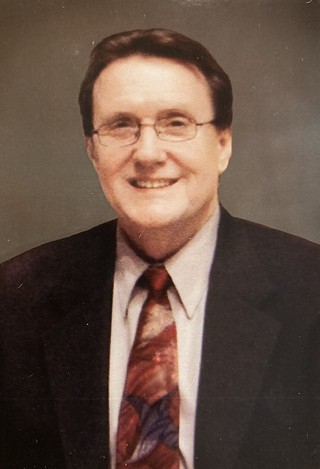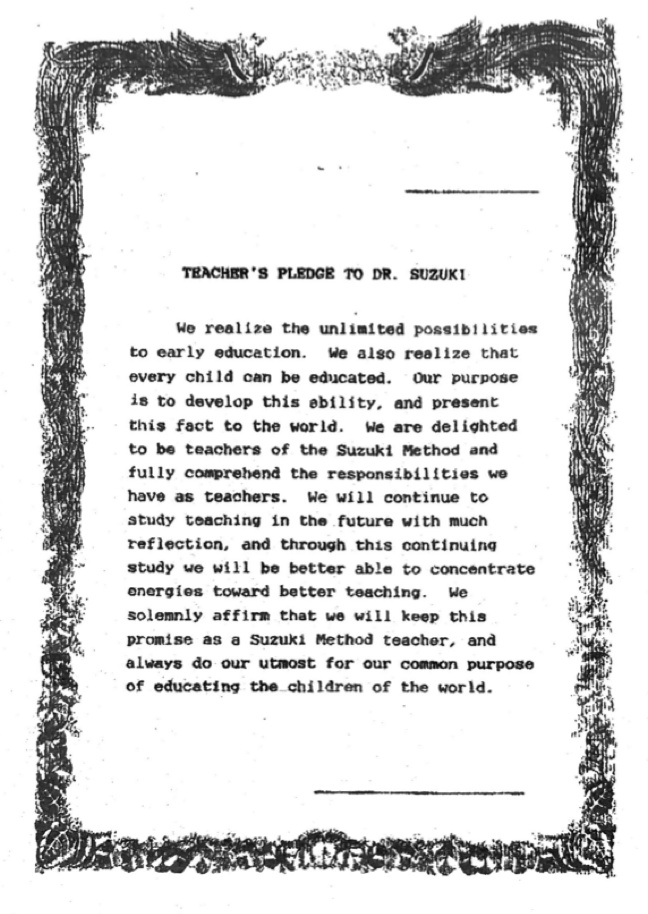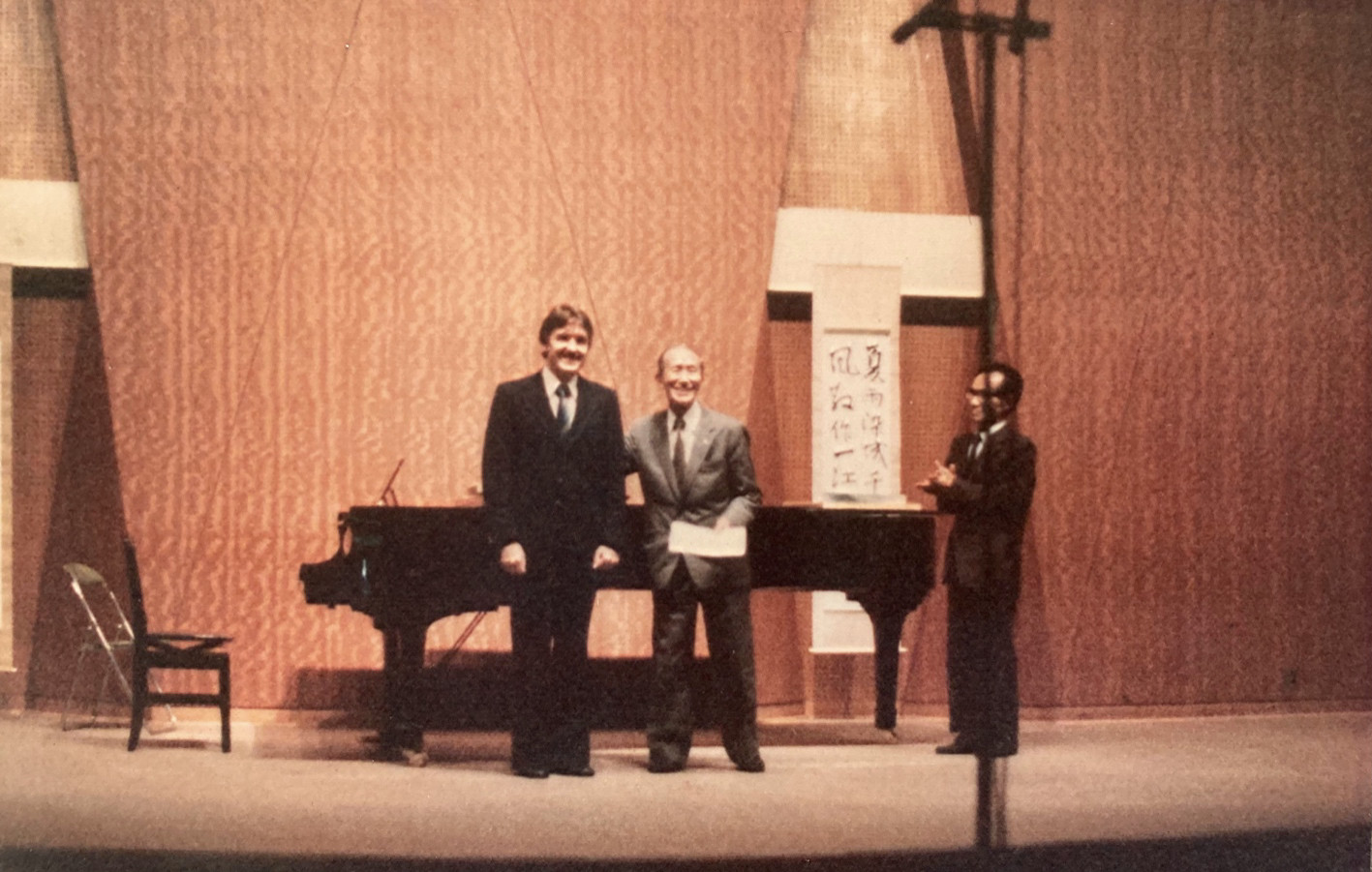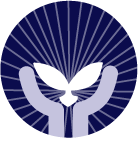Bruce Anderson

I was born in 1953 in Miami Beach, Florida. My musical training began (unbeknownst to anyone) even before I could speak! At that tender age (and forever henceforth!) my favorite pastime was to sit in front of the Victrola machine and listen attentively to music, as the “records” dropped and played one by one. My parents had very good singing voices even though they had no formal training. While in the car on drives, they always sang popular songs, with gusto, which were picked up by my sister (who always sang harmony) and me. We ended up with very good voices, too! Voice, therefore, was my first instrument, but not by formal instruction; instead, by the mother tongue method. My first solo public performance was singing at my kindergarten graduation.
My sister began tapdancing lessons and I, age four, was tagging along. Soon I was doing the steps at home, simply from observing. I began lessons too, at age five, so tap dancing became my first formal instruction and I advanced rapidly. It was exhilarating to feel one’s whole body creating audible musical rhythm, especially with others producing a unified huge sound! Guitar lessons followed, and here was my first instruction in the ability of note reading. At age eight, I was given the choice to continue with guitar or to begin piano lessons. I had “tinkered” with the piano at Grandma’s house since I was small. Now it was shipped to my house. I chose piano lessons. It became my major instrument. The skill of accompanying began to develop in my teenage years, both for the choir and soloists. Collaborative musician skills developed from chamber music work, as I was a continuous member of a piano trio. And I provided music, as a part-time job, for ballet classes. All of these experiences developed necessarily a sight reading skill to a fluid level, which was beneficial in my university studies.
At age eighteen I entered a completely new musical world by commencing the study of the tracker organ and its literature. I eventually became a church organist and developed a reverence for Bach.
In 1973 I was introduced to the Suzuki Method by my organ professor. We attended the American Suzuki Institute at Stevens Point, Wisconsin that year and I studied there for the first time with Haruko Kataoka, also observing her student, Seizo Azuma. I was strongly impressed. I repeated that experience the following summers where Kataoka gave workshops.
In 1974 I received the BA Degree with honors, with a major in music and a minor in Spanish, from Eckerd College, St. Petersburg, Florida. I was immediately hired there as Instructor of Organ and Suzuki Program Director, as I pursued the master’s degree in music education. In 1977 that MA Degree was presented to me by the University of South Florida in Tampa, Florida.
In June 1977, the Suzuki International Conference was held in Hawaii. I studied with Kataoka again there and met Dr. Suzuki for the first time. Following that conference, I flew directly to Japan to enter the long-term teacher training program of Dr. Suzuki. I graduated with the Teaching Diploma from Dr. Suzuki in 1980. During those three and one-half years, I resided in Japan and studied the Suzuki Piano Method with its co-author, Dr. Haruko Kataoka, and the Suzuki Violin Method with Dr. Shinichi Suzuki and Yuko Mori.
After returning to the United States, I was the instructor of Suzuki Piano at the University of South Florida and then at the University of Tampa. For over thirty-five years, I maintained a large private studio in St. Pete Beach, Florida, teaching students as well as training teachers in the Suzuki Piano Method. In 2022 I retired from having a Suzuki program. I always described my teaching as: The Suzuki Piano Method, the Kataoka Piano School, and the Bruce Anderson style.
As a clinician, I have conducted countless seminars and workshops worldwide for piano teachers and educational conferences, teaching and lecturing in the English, Spanish, and Japanese languages. I have been invited faculty at International Suzuki Conferences.
Throughout all these years, I repeatedly returned to Matsumoto about every other year for two-week stays for continuing teacher research and bringing students to study for two weeks and perform in International ten-piano concerts. I also attended many workshops in America and Canada of Dr. Suzuki, Dr. Kataoka, and Ms. Mori, sometimes as translator or accompanist as well.
Place lived since Japan: USA Tampa Bay area, FL
Instruments studied in Japan: piano, violin
Dates in Japan: I was enrolled in Dr. Suzuki’s Teacher Training Program continuously from September 1977 through to graduation in September 1980. Following graduation, I returned to Matsumoto, Japan about 20 times for continuing teacher development until 2019.
Years and locations of workshops with Dr. Suzuki and Dr. Kataoka that were outside of Japan: International Conferences with Dr. Suzuki in Hawaii 1977, followed by Berlin, Amherst, Edmonton, Matsumoto, and Stevens Point, WI, Monroe, L. With Dr. Kataoka, too numerous to count, including as Workshop Director, attendee, and as Translator. Also bringing students to learn from her and perform in major concerts with her direction.
Memories
Memories and Realizations
By Bruce Anderson
My memories* and realizations about Dr. Suzuki’s Teacher Training Program in Matsumoto, Japan are best expressed in my communication to the recent Trainers Conference in Matsumoto, which follows:
Some thoughts on teacher training and suggestions for discussion at the trainer’s conference in Matsumoto from a Matsumoto graduate in 1980.
- I applaud the Japanese teachers for initiating and hosting this conference. It feels as if the post-COVID era has ushered in a renaissance worldwide in new ideas, especially in the fields of education and the arts.
- This should be a moment of reflection for all of us in talent education. In the “Teacher’s Pledge to Dr. Suzuki” it states that we should “study teaching…with much reflection,” which should also apply to organizations regarding teacher training programs. In my opinion they should consistently evaluate their effectiveness objectively, by taking responsibility for the quality of the results of their training. Observing the actual instruction to children in their jurisdiction should be a starting point for determining necessary improvements.
- I suggest that the Pledge should be read aloud by trainees and trainers alike worldwide. Reading it aloud makes it a visceral, unforgettable experience, as we had at graduation, in Matsumoto.
- Let us learn from Dr. Suzuki’s own teacher training program as a model. He was “planting seeds” in us that would grow and develop over time. His training of us was preparation. Graduation was a beginning, not an end. Training continues as we start our own studios and begin with our first student. Others wishing to evaluate our teaching skills would need to wait for this development.
- Knowing that, Suzuki sensei asked us to spend most of our time as trainees in improving our own playing skills. There was a weekly opportunity to perform on stage for him, and the only real requirement for graduation was to perform a full public recital of our own. He wisely knew that the mother tongue natural process would ensure that the students would end up playing like their teacher! I propose that all teacher training put more emphasis on the trainees’ abilities to play their instrument to their highest potential.
- Dr. Suzuki’s teacher training was the centuries-old “master/apprentice” style of learning which is, in my opinion, the mother tongue method itself—failing no one. It is my strongest recommendation that every formalized Suzuki teacher training program would recognize long-term apprenticeships with esteemed master teachers, and even promote these apprenticeships as the highest form of training possible. Imagine a world where all training reached this level. It would make the Suzuki dream possible!
- The teacher training I received under Dr. Suzuki had no course work, paperwork, levels or units to complete, exams, or pass/fail judgments. These are all elements of traditional education systems to which he was so strongly opposed. In fact, we must recognize that the talent education philosophy was born from his rejection of these traditional systems. Instead, our homework was to listen repeatedly to recordings of great artists whose sound would teach us. Our lessons with Suzuki and Kataoka were on how to listen and produce such sounds, or tone, in our own playing, through detailed practice methods created for us on the spot. Dr. Suzuki himself decided when each of us was ready to graduate.
- Please beware of overregulating training for the sake of quality control. It produces the opposite effect. I am aware of more than one bright, young, very capable teacher who although in love with the philosophy and possibilities of Suzuki teaching, was very turned off by unnecessary rules that seemed to stifle her freedom and creativity. This is a loss for the Suzuki movement.
- There must be no codification of detailed steps of pedagogy. Teachers working under Dr. Suzuki at the institute all had academic freedom to create their own unique teaching steps with their own students. There was never an attempt to make teaching steps uniform. What unified all their teaching was the common understanding of the essence of the Suzuki approach. Continuing research results in “new ideas.”
- Dr. Suzuki was our role model in this regard. Each day he would arrive at school saying, “I have a new idea!” Above all, it is the essence of the Suzuki method which we must constantly impart to our trainees at all levels of training, over the details. In my opinion, the essence is found in the philosophy of Talent Education, the process of Ability Development, and the methodology of the Mother Tongue approach. Suzuki sensei, always repeating these concepts to us, was planting seeds. They grow for a lifetime.
Bruce Anderson September, 2023
* More impressions of my long-term training in Japan can be read in my article, “From a Matsumoto Graduate,” which appeared in the American Suzuki Journal of May/June 1984, and my article, “Suzuki Method is Adult Education,” in Dr. Kataoka’s book Sensibility and Education.

Photo in Matsumoto

Graduation, September 12, 1980

